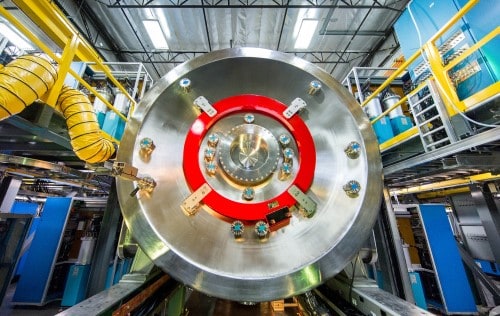
Most private fusion companies expect fusion power to be supplying electricity to the grid in the 2030s. That is according to the first-ever report on the state of the fusion industry, which has been published today by the Fusion Industry Association (FIA) and the UK Atomic Energy Authority (UKAEA). The report – The Global Fusion Industry in 2021 – also finds that private fusion endeavours have received over $1.8bn of funding since the 1990s.
The report states that there are at least 35 private fusion companies worldwide – most of which are concentrated in the US and Europe. Of the 35, a dozen declared themselves in the early stage of development or operating “in stealth mode” and so did not participate in the report. For the remaining 23 companies, 12 noted that they had only begun operating only in the past five years.
While not every company declared the amount of funding they had received, the 18 that did so had accrued almost $1.8bn to date plus an additional $85m in grants and other funding from governments. Four of the biggest players in private fusion – Commonwealth Fusion Systems, General Fusion, TAE Technologies and Tokamak Energy – accounted for 85% of that funding.
This report shows how, largely outside the headlines, the private fusion industry is accelerating towards commercial power
Melanie Windridge
Magnetic confinement, in which magnetic fields are used to contain a high-temperature plasma, is the most popular fusion technique being employed by the companies, according to the report. While electricity generation is a main target for private fusion companies, almost half of the firms see the technology also being applied to space propulsion with other markets including marine propulsion, hydrogen fuel and industrial heat.
Ambitious goals
Over the coming decade, the biggest experiment in fusion will be the ITER tokamak, which is currently being built in France and is expected to fire up in the late 2020s. It is a research reactor designed to show fusion gain, whereby more energy is generated by the fusion reaction than put in, and will not therefore supply electricity to the grid. That task is expected to be performed by fusion plants in the middle of the century. The UK, for example, is currently designing the STEP prototype plant, which is expected to be in operation in the 2040s.
Despite this timeline, the report found that most private companies think they can reach that aim sooner – albeit on a smaller scale. Over two-thirds of the companies surveyed for the report believe that electricity generated from fusion would enter the grid in the 2030s, while 20% thought it would more likely be the 2040s or 50s. UK announces potential sites for prototype fusion energy plant
“This report shows how, largely outside the headlines, the private fusion industry is accelerating towards commercial power,” says FIA communications director Melanie Windridge. “The ambitious timescales highlighted in our first survey demonstrate the drive and commitment that exists within this growing industry.”
Indeed, Windridge told Physics World that if fusion is to have a meaningful impact on climate-change targets, then the first electricity production will be needed in the 2030s with commercial roll-out ramping up in the 2040s. Yet that will not only emerge from the activity of private firms.
“The companies recognise the importance of public-private collaboration, particularly on technologies such as tritium breeding and new materials,” adds Windridge. “We are calling for more support for public-private partnerships to help them realise their ambitions.”



